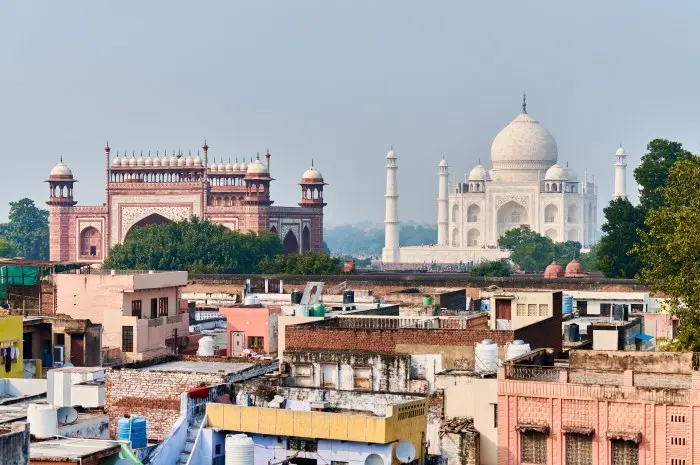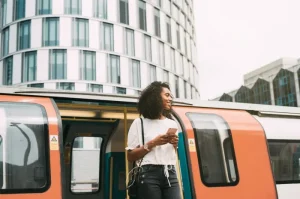Discover essential safety tips for navigating India’s bustling cities, ensuring a secure and enjoyable experience in this vibrant and diverse country.
India’s cities are a tapestry of colors, sounds, and movements, each with its own unique character and challenges. From the historical lanes of Delhi to the high-tech boulevards of Bangalore, exploring these urban landscapes can be exhilarating yet daunting.
For travelers, understanding how to navigate these environments safely is crucial. This guide provides ten essential safety tips designed to help visitors explore India’s bustling cities confidently and securely, covering everything from transportation to personal security.
1. Familiarize Yourself with the Local Area
Before venturing out, take the time to familiarize yourself with the local area. Study maps, understand the layout of the city, and identify your accommodation and key landmarks.
Knowing the basic geography of the city can prevent you from getting lost and help you navigate back to a safe area if needed. Apps like Google Maps are invaluable for real-time navigation and planning your routes in advance.
2. Use Reputable Transport Options
Transportation can be a significant safety concern in India’s cities. Always opt for reputable transport options. Use officially registered taxis or popular ride-sharing apps like Ola and Uber for safer travel.
Avoid unmarked cabs and rickshaws that do not display official identification. For auto-rickshaws and cycle rickshaws, agree on the fare in advance to avoid disputes later.
3. Protect Against Pickpockets and Scammers
India’s urban centers are bustling with activity, which unfortunately includes pickpockets and scammers. Always keep your belongings secure and maintain awareness of your environment, especially in crowded places like markets, train stations, and tourist attractions.
Consider wearing a money belt or a cross-body bag that closes securely. Be wary of common scams targeting tourists, and never share your personal or financial information with strangers.
4. Respect Local Customs and Dress Appropriately
Understanding and respecting local customs and religious practices can greatly enhance your safety and interaction with locals.
Dress modestly, especially when visiting religious sites, to avoid drawing unwanted attention and to show respect for the local culture. Observing local dress codes can also make you less conspicuous as a tourist.
5. Manage Health Risks
Health safety is paramount. Avoid drinking tap water and ensure any raw fruits and vegetables are washed with purified water or peeled before eating.
Street food, while a significant part of India’s allure, should be approached with caution; choose vendors where you can see food being cooked at high temperatures. Carry hand sanitizer and use it frequently, especially before eating.
6. Keep Emergency Contacts Handy
Always have a list of emergency contacts, including the local police, your country’s embassy, and medical facilities.
Most smartphones allow you to set up an emergency information page accessible from your lock screen. Inform someone of your itinerary, especially if you plan to explore less populated or more complex areas.
7. Stay Digitally Secure
With the rise of digital technology, keeping your digital information secure is as important as your physical safety. Avoid using public Wi-Fi networks for sensitive transactions, and consider using a VPN for an added layer of security.
Keep digital copies of important documents like your passport and visa in a secure online storage that you can access if your physical copies are lost or stolen.
8. Navigate Nighttime with Caution
Exploring cities by night can offer a completely different experience but requires extra caution. Avoid isolated areas after dark and try to stay in well-lit, populated places. If going out at night, travel in groups if possible, and always let someone know where you are going.
9. Monitor Local Media and Stay Informed
Keep an eye on local news for any reports of unrest or disruptions in the city you are visiting. Political demonstrations and strikes (bandhs) can occur and may disrupt transport and local services. Being aware of the local situation allows you to avoid potentially unsafe areas.
10. Use Common Sense and Trust Your Instincts
Ultimately, one of the best safety tools is your own intuition. If something feels off, trust your instincts and remove yourself from the situation if possible. Don’t worry about offending someone if you feel uncomfortable. Safety should always be your top priority.
Traveling through India’s bustling cities can be a rich and rewarding experience. While the vibrant chaos is part of the charm, it also necessitates a level of caution.
By following these essential safety tips, you can protect yourself and ensure that your Indian urban adventure is memorable for all the right reasons. Stay informed, be prepared, and immerse yourself safely in the incredible diversity and vitality of India’s cities.




